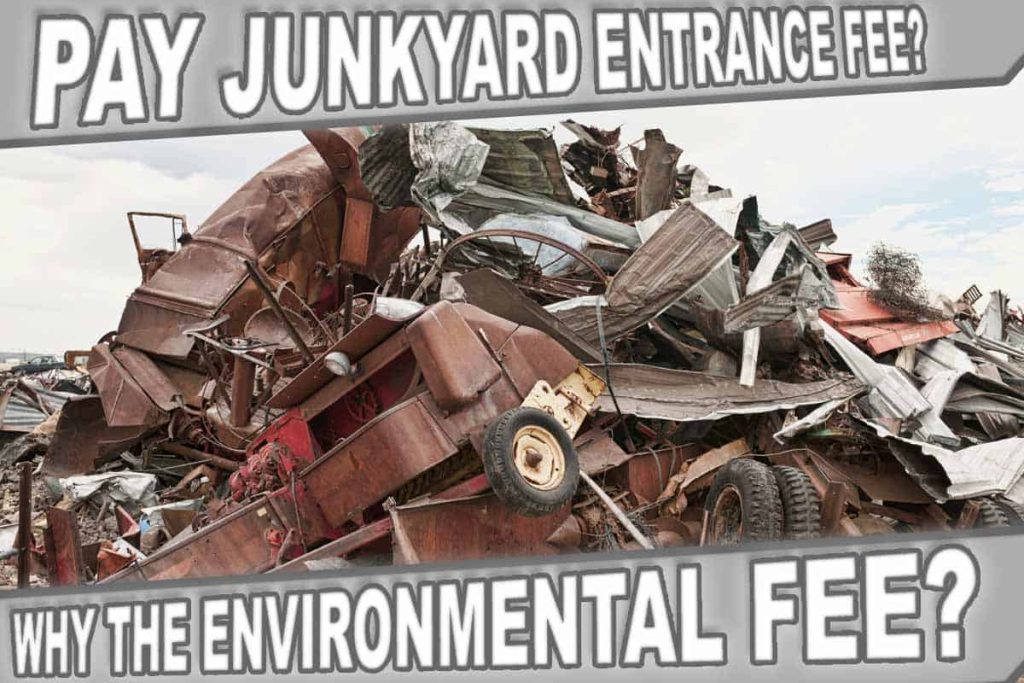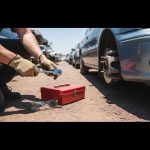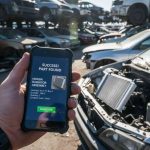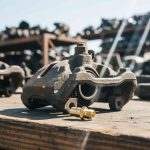As you enter any of the largest junk yards or salvage yards, you realized you need to pay to get in, but not just that! Once you have pulled the part you need, you also pay an environmental fee, why do we have to pay an entrance and environmental fee at junkyards and salvage yards when we are buying from them?
One of the reasons why junkyards charge an entrance or admission fee (usually between $1-$3) is mainly because of yard maintenance, they keep the yard clean of debris and such. The Environmental fee is about 5% and NOT dictated by the state, it helps recycling companies to effectively collect, treat and dispose of hazardous waste materials, fluids from dead batteries, oils, antifreeze or coolant, worn-out tires and many other by-products that hurt the environment.
One of the most rewarding things about a junkyard are the low prices when you find the part you need, especially when the part you need is a high ticket item like an engine or a transmission. We could be already spending $200 to $500 dollars at the yard, but they want you to pay to get in. We all know Costco, Sam’s Club and others charge you a yearly subscription to be able to get in and buy their products at discounted prices. Junkyards or salvage yards see this and implement it too, they save you hundreds of dollars on the parts you need, so instead of paying $1500 for that engine you need, you pay $250.
How can you enter a junkyard without paying the entrance or admission?
Many junkyards like LKQ Pick your part, Pull A Part, Pick N Pull, Pull and Pay and others do offer free entrance on certain days of the week. Places like LKQ have free memberships with free entrance called PYP Garage. Other companies like Pull A Part offer a VIP card where you collect points and free admission.
In case you just want to cruise and check out the yard, you can also talk to one of their managers and ask for a free pass, if they see that you are neither dressed nor have tools to pull parts they may grant you a free pass.
Can you not pay the environmental fee?
While the answer should be yes, most likely you couldn’t get away with not paying it. Nowadays junkyards use a computerized Point Of Sale system that dictates prices and automatically includes taxes and that pesky environmental fee; It is impossible for the cashier to remove it or temper with it.
When a junkyard list their prices, they don’t include the tax nor the environmental fee, this can drive the prices of a parts by up to 15% depending on your state or county tax rate, so be sure to have enough and always include the taxes and eco-fees to your purchases before committing to pull a part you can’t pay for.
Why should you pay the ECO-FEE?
Salvage yards do their part collecting and buying junk cars that are decaying or rusting away, saturating the ground with used oils, antifreeze, battery acid coolant, mercury and other hazardous chemicals that end up in rivers and consequently our drinking water.
Protecting our environment is crucial and by paying the rufly 5% we help them with the proper disposal and recycling of those by-products.
Secondary Containment is a process or method with the help of structures that help maintain and keep hazardous and polluting material from leaking down into the ground caused by gravity through drains, sewers and others into the solid, groundwater, streams and lakes.
Using metal containers to keep oils and fluids to be taken to the reclamation company that will recycle it into various other products.
A properly run junkyard using the secondary containment method will collect, store and recycle used oils filters, used antifreeze, will have store tanks to keep petroleum products and other by-products, removal of tires and shredding of such, properly manage lead acid batteries avoiding the cracking or leaking, properly contain freon and other refrigerants called chlorofluorocarbons that for decades destroyed the ozone layer, toxins like mercury and others commonly used prior to 1972.
Junkyards or salvage yards pay a premium on permits and go through s very strict process to be able to operate. When a junkyard is fined for negligence and breaks any of the second containment procedures they pay hundreds of thousands of dollars in reinstatement fees. They try their best to do what is right and it helps us all in the long run.






